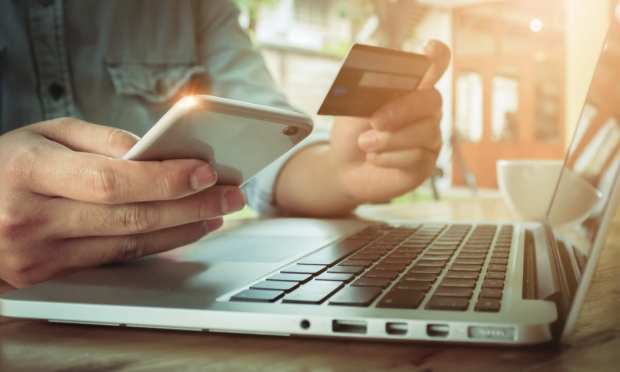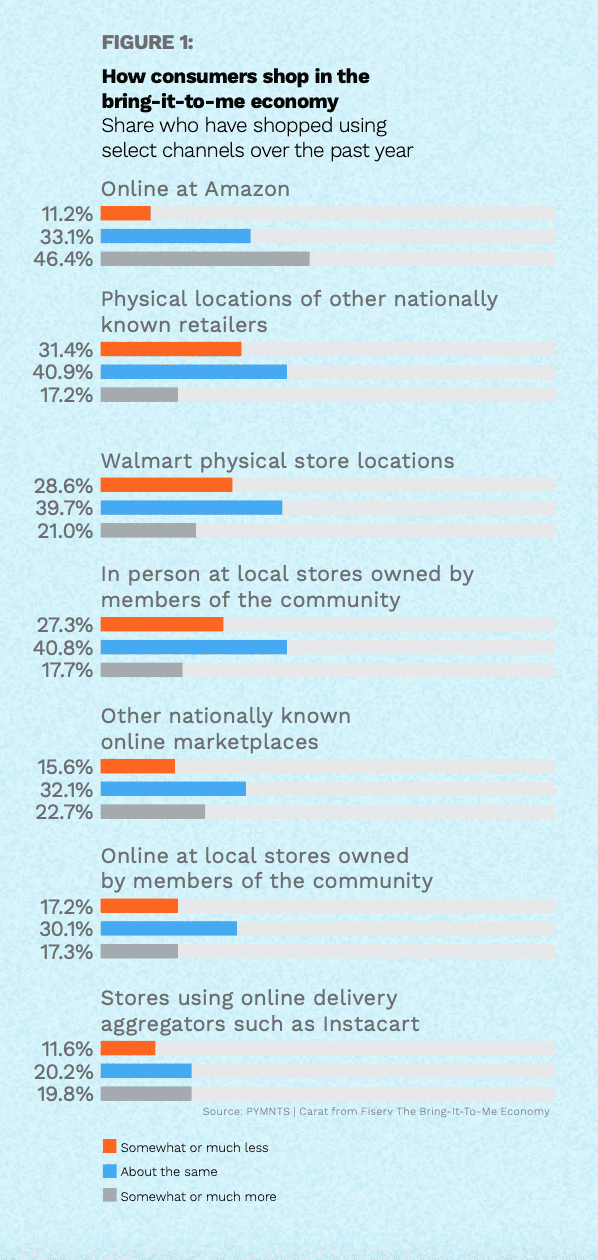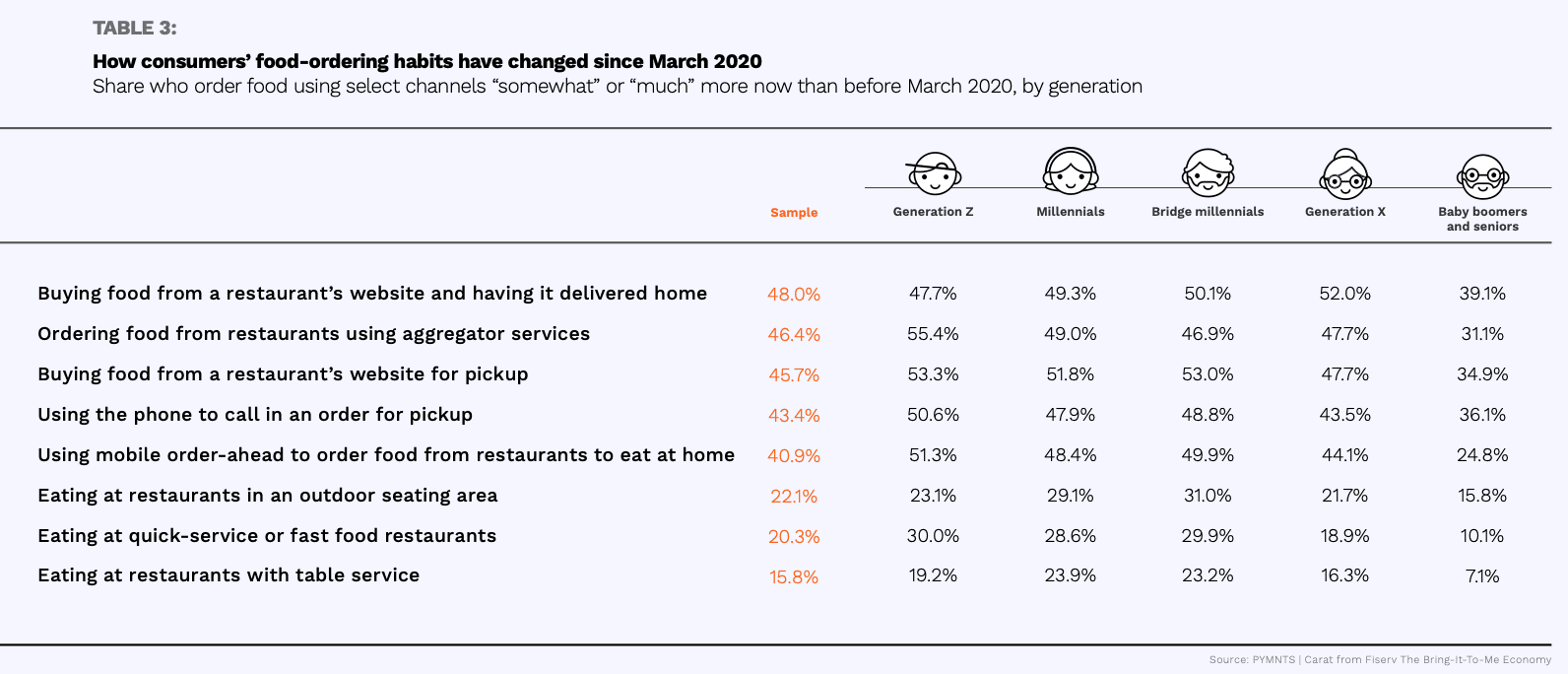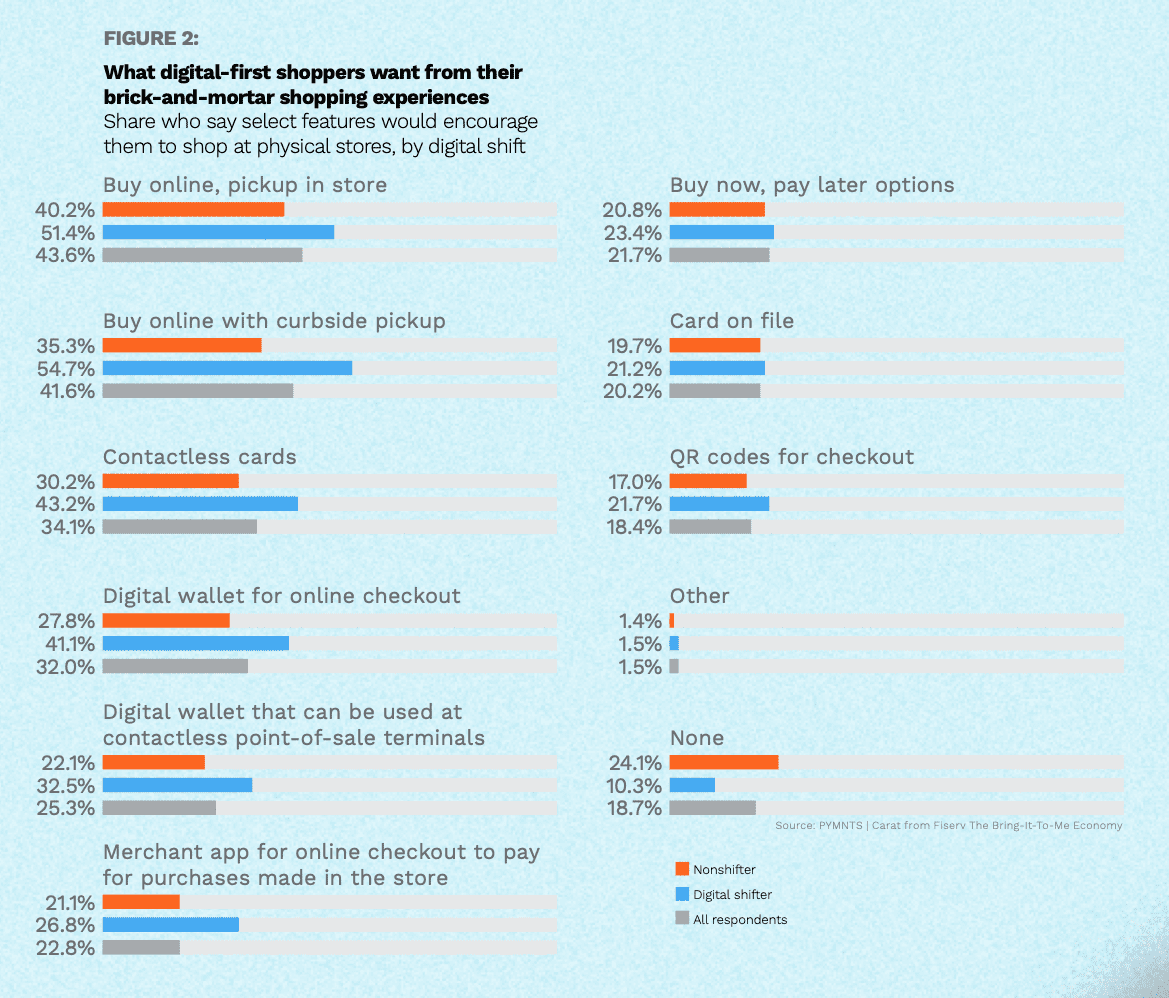New Study: Bring-It-To-Me Economy Ascends As Consumers Embrace Home-Centric Lifestyles

Here in the future, we don’t have to leave the domicile unless we want to. It’s a whole new way of consuming, living and paying. Perhaps most importantly, people absolutely love it.
That’s clear in The Bring-It-To-Me Economy, a PYMNTS and Carat from Fiserv collaboration, focusing on many ways that online marketplaces and aggregators are now driving omnichannel commerce for a population that’s habituated to food and goods magically arriving at our door.
Surveying a census-balanced panel of nearly 5,270 U.S. consumers in Q2, the new report notes, “Home delivery has become so ubiquitous in the U.S. that consumers no longer see it as a differentiator but as a necessity,” with PYMNTS’ latest research showing that 91 percent of all consumers in the U.S. made at least one purchase on Amazon in the past year, 70 percent have made a purchase on at least one other major digital marketplace, 52 percent of “report having made purchases using online retail delivery aggregators such as Instacart during that time,” and programs like Walmart’s InHome service going one step beyond by not just delivering groceries but putting them in your fridge (with the customer’s permission, of course).
In fact, the study finds that “most common factor that consumers now say will encourage them to shop with more brick-and-mortar retailers is to not have to go into stores at all; they want in-store pickup and curbside delivery options to help them avoid having to shop in person,” with 44 percent of consumers favoring in-store pickup options for online orders, and 42 percent saying that “curbside pickup options would do the same.”

The Connected Economy As Unifier
Behind the scenes — and making the scene — is the Connected Economy, now busy assimilating all aspects of digital into an interoperable web of products and services that require less effort to acquire than was ever imagined by “futurists” of even 20 years ago.
For example, “Consumers who use voice assistants are similar to millennials and bridge millennials in that they represent a small yet key consumer segment in the bring-it-to-me economy, and their preferences are a good indication of its future direction,” per the study.
The Bring-It-To-Me Economy report finds that 89 percent of voice assistant shoppers say they’re purchasing at least one type of product online more now than they did before March 2020, adding that “only 52 percent of consumers who do not shop using voice assistants are buying online more now than they did before.”
In addition to the 67 percent of consumers who now routinely order food from restaurants for delivery or pick up to eat at home, 72 percent of grocery shoppers “now order their groceries online for delivery, and many more are doing so now than before March 2020,” per the report, which adds that 28 percent of grocery shoppers “are ordering groceries for curbside pickup more often now than they had before March 2020, and 27 percent are ordering more groceries online to be delivered by local stores or delivery services now than before.”

On Fraud, Friction And Physical Store Features
As with all things, fraud and theft threaten the tranquility of bring-it-to-me lifestyles.
“Forty-one percent of all consumers report having experienced at least one security scare during the past year, meaning they have either been notified of suspicious account activity or have noticed suspicious activity with regard to at least one of their digital purchases,” according to The Bring-It-To-Me Economy findings. What’s more, 53 percent of consumers whose online orders never arrived “say fraudulent activity is a more frequent occurrence now than before, in fact, and 51 percent of those who have seen strange charges made to their cards say they have seen them happen more often now than just 12 months ago.”
Along with ever-stronger fraud-fighting tech, online marketplaces and platforms are enhancing experience to make people feel safer and punch up the ease of a bring-it-to-me decade.
Per the report, “Digital marketplaces have undoubtedly raised the bar on the ease and convenience that consumers expect from their shopping experiences, but aggregators have gone one step further. Aggregators like Instacart and ShopRunner not only allow consumers to order products online but also often offer same-day delivery.”
The Bring-It-To-Me Economy finds that 52 percent of consumers report shopping via online delivery aggregators through which they can order items to be delivered the very same day, “eliminating the need to leave the house to replenish even the most crucial household necessities” such as soap, dishwashing detergent, toilet paper “and most other items.”
As would be expected, payment options carry weight with the bring-it-to-me crowd, and especially as they consider what would draw them back to brick-and-mortar stores.
“As many as 55 percent of so-called ‘digital shifters’ say they would be more inclined to purchase from physical stores if they could buy their items online and pick them up curbside, for example. We also found that 51 percent would be more likely to buy from physical stores if they could purchase products online and pick them up in store and that 27 percent would buy from physical locations if they could find items in store and the skip the checkout line.”

